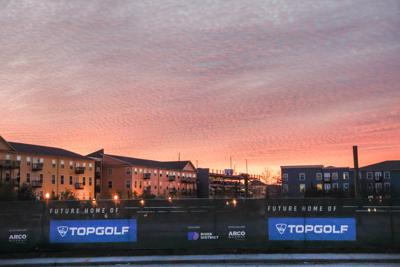In many ways, the saga of the $1 billion River District development mirrors the contradictions posed by the Mississippi River itself to New Orleans. On one hand, the river brings commerce vital to the city's economic viability. On the other hand, as we’ve seen repeatedly, the murky waters of the Mississippi can threaten lives and livelihoods in an instant if not properly managed.
The proposed residential and entertainment district on more than 50 acres adjacent to the Ernest N. Morial Convention Center has generated significant fanfare — and stoked parochial fears in a city accustomed to dealing with forces beyond its control.
As the project’s outlines became clearer last year, some argued that the developers, a consortium called River District Neighborhood Investors (RDNI), were still not transparent enough. Others fretted that tax subsidies requested by RDNI constituted a needless giveaway. Still, others doubted that promised affordable housing units would materialize.
We are not naive about these concerns. However, we believe the River District project, with appropriate oversight, will be a boon for the city — and that efforts to derail it are misguided. In particular, recent news that the City Council and the developers have ironed out a cooperative endeavor agreement to govern the district's development should quiet lingering fears.
The agreement gives the council oversight of the public-private project through a new entity called the Municipal RDNI District. It eliminates the requirement of city funds subsidizing affordable housing in the district, and it commits developers to providing 300 affordable housing units in the project's first four years. Equally important, it paves the way for a land swap to build a TopGolf facility, which will generate revenue for the project.
With those and other specifics nailed down, River District's potential to alter New Orleans' economic trajectory becomes clear. The project will build on land that has been unused — and untaxed — for decades, and it will open a new riverfront vista for locals and visitors.
Cities around the country that have reimagined their under-used public spaces have reaped enormous benefits. Examples include the High Line in New York or Buffalo Bayou Park in Houston.
RDNI developers include young, diverse professionals who know the city. In a meeting with our Editorial Board earlier this year, they expressed a sincere commitment to making the district something that benefits all New Orleanians.
To that end, they must continue to get the details right. That means viewing the council and nearby neighborhoods as valuable partners and stakeholders in the project.
The developers' recent moves seem to have mended fences, but we understand why some council members were upset about not having the full story when they hastily approved a tax break on Dec. 1 for an office tower to be occupied by Shell Oil. The payment-in-lieu-of-taxes, or PILOT, grants a 15-year tax exemption, worth $21.6 million, for the building based on certain representations by developers. Critics say some of those projections were overblown, and the PILOT has been challenged in court. Developers seem confident of prevailing, and an attorney general’s opinion supports that view.
We understand developers’ need to move fast to meet deadlines and secure financing, but every hiccup like this is a distraction from the bigger picture. What’s at stake is more than a high-end office tower, a top-tier entertainment venue and affordable housing units; it's a chance for the city to finally harness the full potential of the great river that fostered New Orleans' founding more than 300 years ago.
New Orleanians, sitting as we do on a precarious strip of land, need to know that those who seek to build our future stand on solid ground.

